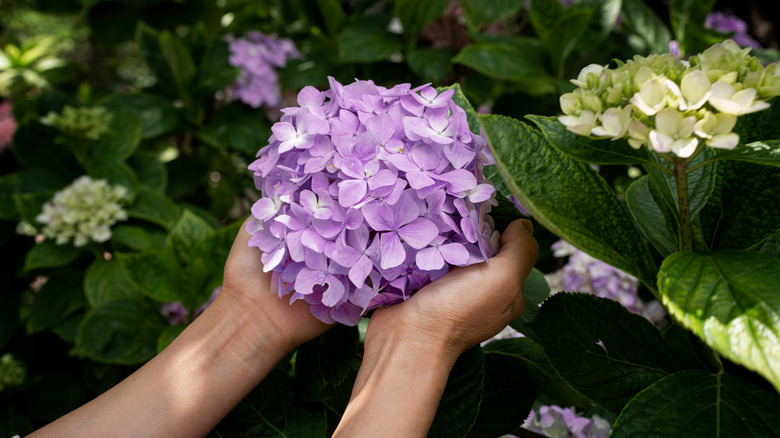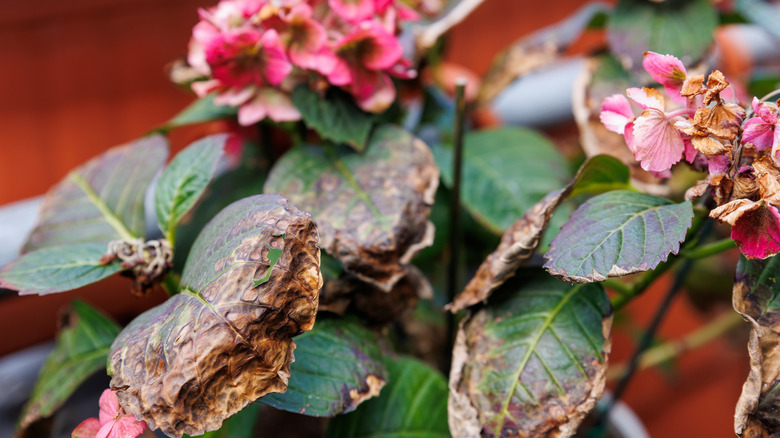How To Revive Dying Hydrangeas So They're Healthier Than Ever
The Hydrangea family (Hydrangeaceae) is a very popular choice for both garden designers and homeowners, and there are many different varieties of hydrangeas to choose from. They are fantastic for brightening up borders or flower beds with their striking voluminous heads in colors like pink, white or blue, which are framed perfectly by a flurry of dark green leaves. If hydrangeas are properly cared for, they can return year after year, growing bigger as every season passes. However, there's nothing more disheartening than noticing your hydrangea is in desperate need of revival. So, how do you best revive a dying hydrangea to bring it back to life?
There's not one particular answer, as each hydrangea plant is unique and will require a different action plan. But there are a few things you'll need to tick off your checklist to give it the best chance of not only surviving, but thriving. These include checking the water density of the soil, monitoring the sunlight, getting rid of excess fertilizer, and pruning any deadheads. Being able to identify which of these issues your plant is dealing with will make your life a lot easier moving forward, and will ensure you're taking the best care of your hydrangeas.
Ways to bring your hydrangeas back to life
Too much or too little water is a common hydrangea issue, so if your hydrangea is dying, your first port of call should be to check the moisture levels in your soil. Hydrangeas love water, and on average, require one inch of water per week. If the soil feels dry and the leaves look brown, then you'll need to up your watering routine. However, an overwatered hydrangea can suffer from root rot, so if your soil appears wet and swamp-like, then leave it to fully dry out before watering again.
If the leaves are turning crispy, it's probably due to too much direct sunlight. Adding mulch and watering more frequently can help. If this doesn't work, you probably need to transport your hydrangea to a place that experiences less sunlight. There's also fertilizer burn to consider. If you're guilty of using too much fertilizer, your hydrangea's leaves can go brown and crunchy. Only add fertilizer two or three times a year, and if you think you've added too much, flush out the excess by watering daily.
Finally, keep on top of pruning, as leaving deadheads could be a waste of the plant's energy source. If you notice there are lots of deadheads on your hydrangea plant, snip them right above the full-sized pair of leaves that sit underneath the flower. It's also a good idea to prune any crossing branches, because any rubbing can cause wood damage and disease.

